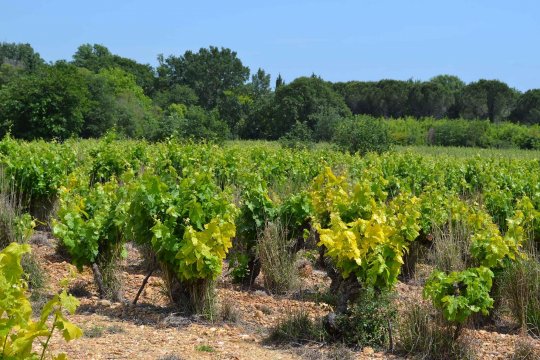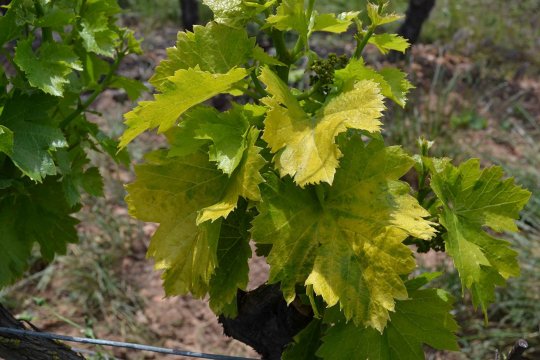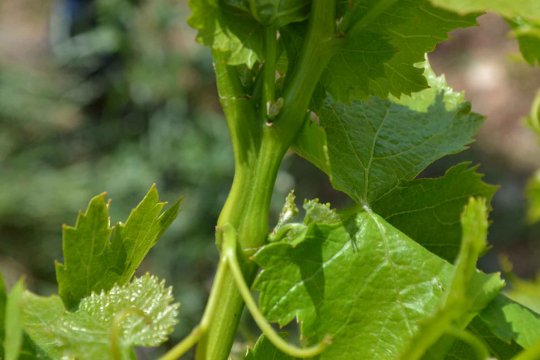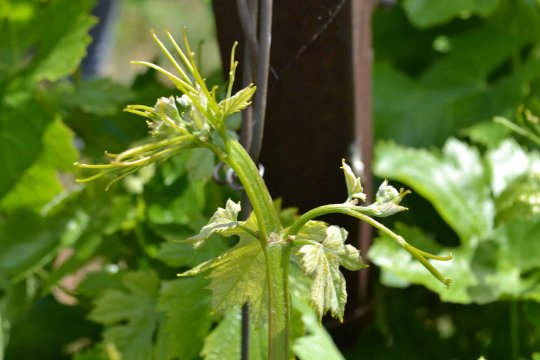Grapevine fanleaf is a very serious disease, caused by viruses of the Nepovirus genus, and is present in vineyards all over the world. In France, its name court-noué comes from one of its symptoms (shortening of the internodes). The name "fanleaf" refers to another symptom (leaf deformation in the shape of a palm leaf or fan).
It infects rootstocks and grape varieties, whether they are Vitis vinifera, other Vitis species or hybrid varieties. The derived symptoms are organ-specific, with a wide variability and range in severity from mild to massive mortality. As the disease is transmitted by soil nematodes, it can persist for a long time after a plot has been polled up, and reinfect the next plantation sooner or later. This virus, and its catastrophic spread which accompanied the post-phylloxera recovery, is at the origin of the implementation of French selection and the resulting certification process for wood and vines.




